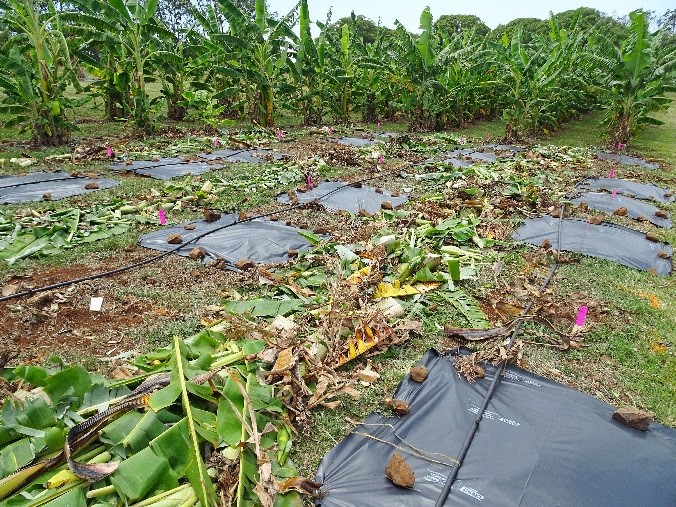Reducing inoculum from plants infected with Panama disease
A key aspect of managing Panama disease tropical race 4 on an infested property, is the implementation of practices to reduce the amount of inoculum (number of spores) entering the soil. The management of infected plants via a careful and thorough destruction protocol is one of the most crucial of these practices.
The current method requires infected plants to be cut up and placed into large plastic bags with 1 kg of urea to accelerate the breakdown of the fungus and plant tissue. Urea is then evenly applied to the soil surface at a rate of 1 kg per square metre around the infected stools, and 200 g of urea is also applied to each gouged corm. The entire treated area is then covered with heavy plastic to prevent runoff and to contain the breakdown gasses which help kill the fungus.
Lab and field trials conducted to validate this method, have showed the application of urea at this rate can significantly reduce inoculum levels.
See below for details of the lab and field trials:
Due to strict biosecurity conditions this research has been conducted using Panama disease race 1 as a surrogate for Panama disease tropical race 4.


Please note...
Due to the extremely high rates of urea used for this technique, the strategy is ONLY utilised to treat confirmed detections of Panama disease on properties where a Notice of presence of Panama disease tropical race 4 is in effect.
